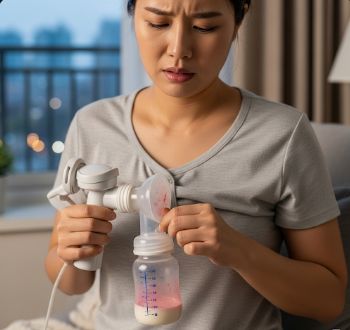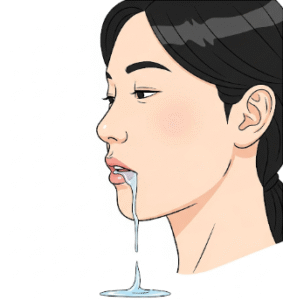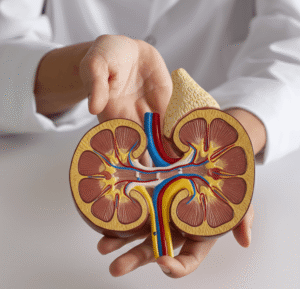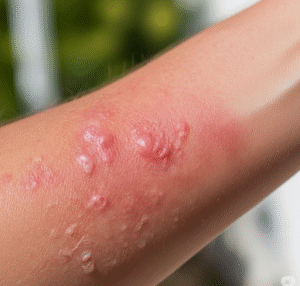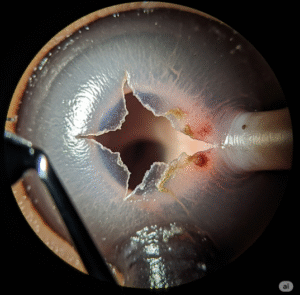Overview
Pink breast milk is a condition where a lactating mother notices a pink or reddish tint in her milk. This is relatively uncommon but often causes concern due to the unusual coloration. Pink breast milk is usually harmless and temporary, but it can sometimes signal underlying health issues in the mother, such as breast trauma, infection, or blood in the milk ducts. Understanding the causes, symptoms, and management of pink breast milk is essential for both maternal and infant health.
➤ Pink breast milk is generally not harmful to the baby, but persistent or heavy discoloration should be evaluated.
➤ It can appear suddenly or gradually, depending on the underlying cause.
➤ Early consultation with a lactation specialist or physician ensures safety and proper management.
Korean maternity clinics and lactation centers provide comprehensive evaluation, safe breastfeeding guidance, and targeted treatments for mothers experiencing pink breast milk.
Key Facts
➤ Pink breast milk is typically caused by small amounts of blood mixing with milk.
➤ It can occur in one or both breasts.
➤ Causes range from benign trauma to infections or medical conditions affecting the milk ducts.
➤ In most cases, the baby remains unaffected and can safely continue breastfeeding.
➤ Korean hospitals and lactation centers offer diagnostic services and individualized treatment for mothers with pink breast milk.
What is Pink Breast Milk?
Pink breast milk refers to breast milk that has a visible pink or reddish coloration, indicating the presence of blood or blood-tinged fluids. This may result from minor trauma or more significant medical conditions affecting the breast tissue or ducts.
➤ Medical perspective: Pink breast milk is often caused by ruptured blood vessels in the breast ducts, leading to small amounts of blood mixing with milk.
➤ Types of discoloration:
➤ Light pink milk – usually from minor nipple or duct trauma, often self-limiting.
➤ Bright red milk – may indicate active bleeding or infection.
➤ Persistent pink or reddish milk – requires medical evaluation to rule out underlying conditions.
➤ Appearance: Milk may appear light pink, reddish, or rust-colored, sometimes accompanied by blood streaks.
What Symptoms Are Related To
Pink breast milk may occur with additional signs, depending on the cause:
➤ Local breast symptoms:
➤ Tenderness or soreness in the affected breast.
➤ Swelling, lumps, or palpable changes in the breast tissue.
➤ Nipple cracks, fissures, or minor trauma.
➤ Systemic or infection-related symptoms:
➤ Fever or chills if associated with mastitis or breast infection.
➤ Redness, warmth, or inflammation of the breast skin.
➤ Lactation-related symptoms:
➤ Temporary decrease in milk supply due to discomfort.
➤ Pain during milk expression or breastfeeding.
Recognizing these associated symptoms helps healthcare providers determine whether the discoloration is benign or requires intervention.
What Causes / Possible Causes
Several factors can contribute to the appearance of pink breast milk:
➤ Trauma or mechanical causes:
➤ Nipple cracks or fissures from breastfeeding.
➤ Vigorous pumping or improper latch causing minor duct injury.
➤ Pressure or trauma to the breast during physical activity.
➤ Infections and inflammation:
➤ Mastitis – bacterial infection causing inflammation and sometimes blood in milk.
➤ Ductal infections or abscesses.
➤ Ductal or vascular causes:
➤ Ruptured blood vessels in the milk ducts.
➤ Intraductal papilloma – a benign growth in the duct causing occasional bleeding.
➤ Medication or dietary factors:
➤ Blood-thinning medications may increase bleeding risk.
➤ Rarely, dietary components can slightly alter milk color but not typically red or pink.
➤ Underlying medical conditions:
➤ Blood clotting disorders.
➤ Benign breast tumors or polyps.
In most cases, minor trauma or ductal bleeding is the primary cause and resolves spontaneously. Persistent or recurrent pink breast milk, however, should be evaluated by a healthcare professional.
When Should I See My Doctor
Consult a physician or lactation specialist if pink breast milk is accompanied by:
➤ Persistent or increasing blood in the milk, lasting more than a few days.
➤ Painful lumps, swelling, or warmth in the breast.
➤ Signs of infection, including fever, chills, or redness.
➤ Difficulty breastfeeding due to pain or discomfort.
➤ History of breast abnormalities or previous breast surgery.
Early evaluation in Korean maternity or lactation clinics ensures accurate diagnosis, safe breastfeeding practices, and treatment if necessary.
Care and Treatment
Management of pink breast milk focuses on relieving symptoms, addressing underlying causes, and maintaining safe breastfeeding:
➤ Home care for minor trauma:
➤ Apply warm compresses to relieve soreness.
➤ Ensure proper latch and breastfeeding technique.
➤ Use nipple creams to promote healing of cracks or fissures.
➤ Medical interventions:
➤ Antibiotics for mastitis or bacterial infection.
➤ Evaluation for intraductal papilloma or benign breast growths.
➤ Adjustment of medications if contributing to bleeding.
➤ Breastfeeding considerations:
➤ Continue breastfeeding unless advised otherwise.
➤ Pumping may be temporarily reduced if painful, but milk expression helps prevent engorgement.
➤ Monitor baby for any signs of discomfort or digestive changes.
➤ Follow-up:
➤ Regular monitoring to ensure resolution of discoloration.
➤ Ultrasound or mammography in persistent cases to rule out ductal lesions.
Treatment Options in Korea
Korean maternity and lactation centers offer comprehensive evaluation and care for mothers experiencing pink breast milk:
➤ Lactation consultation – guidance on proper breastfeeding technique and nipple care.
➤ Diagnostic imaging – breast ultrasound or mammography to detect ductal abnormalities.
➤ Medical management – antibiotics, anti-inflammatory therapy, or minor procedures for intraductal issues.
➤ Pain management and supportive care – topical creams, warm compresses, and comfort measures.
➤ Follow-up and monitoring – ongoing supervision to ensure safe breastfeeding and resolution of symptoms.
➤ Patient education – counseling on safe breastfeeding, hygiene, and early detection of complications.
Patients in Korea benefit from expert healthcare providers, modern facilities, and supportive care programs, ensuring safe breastfeeding while addressing underlying causes of pink breast milk.

